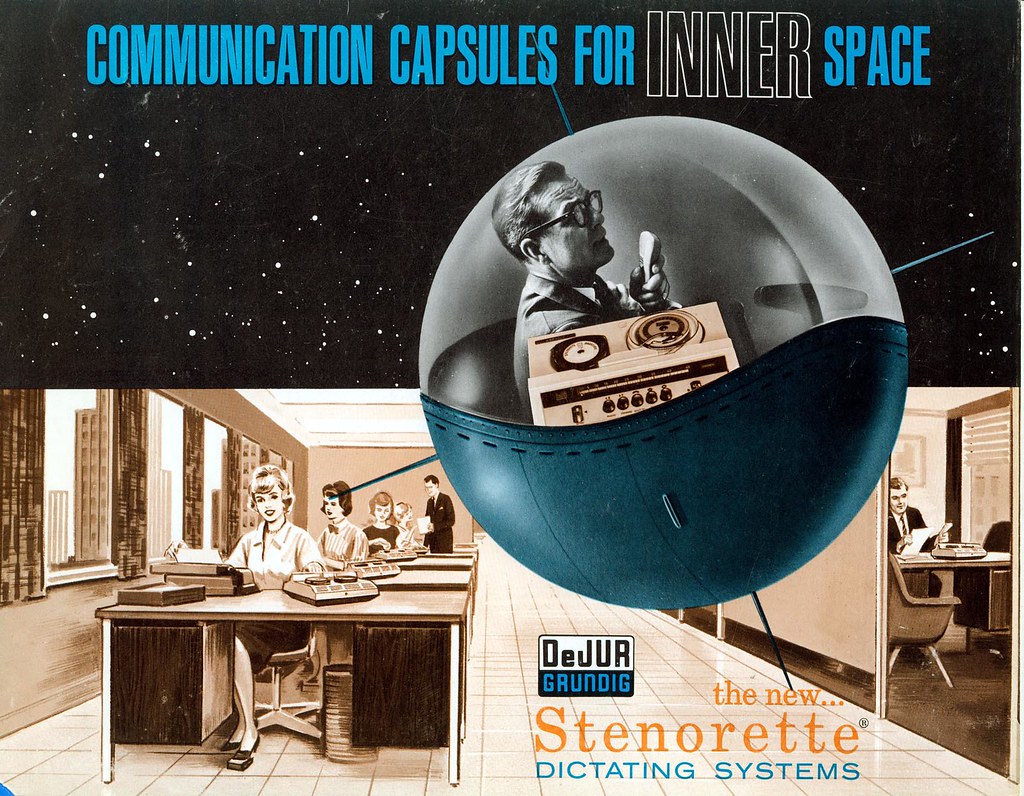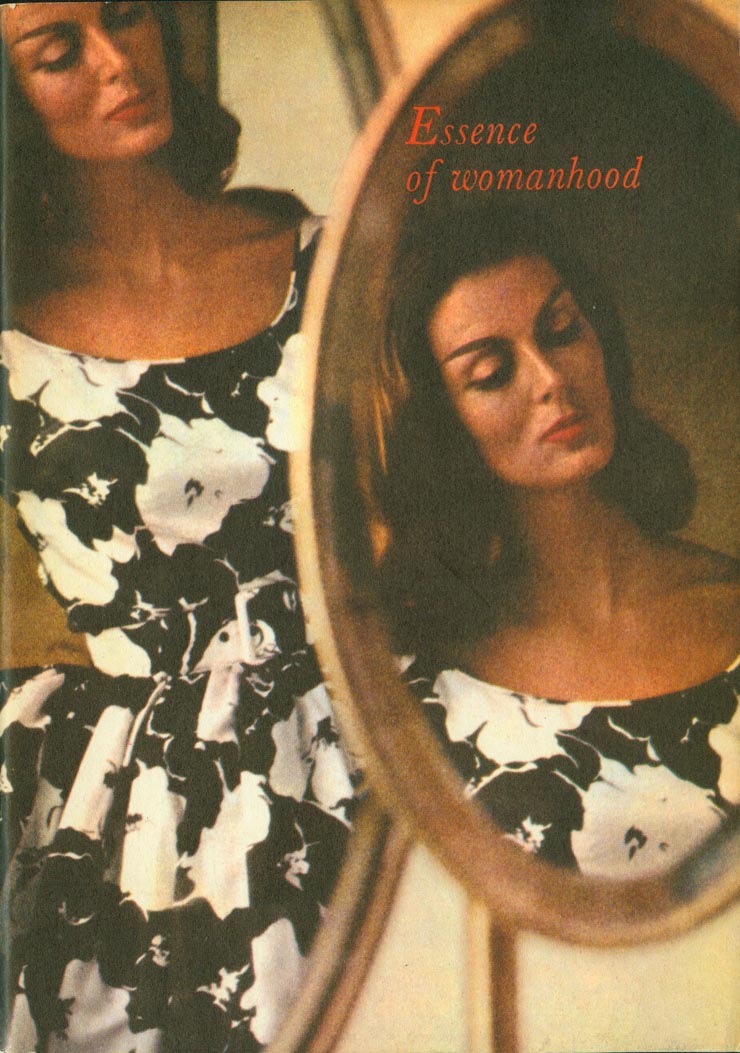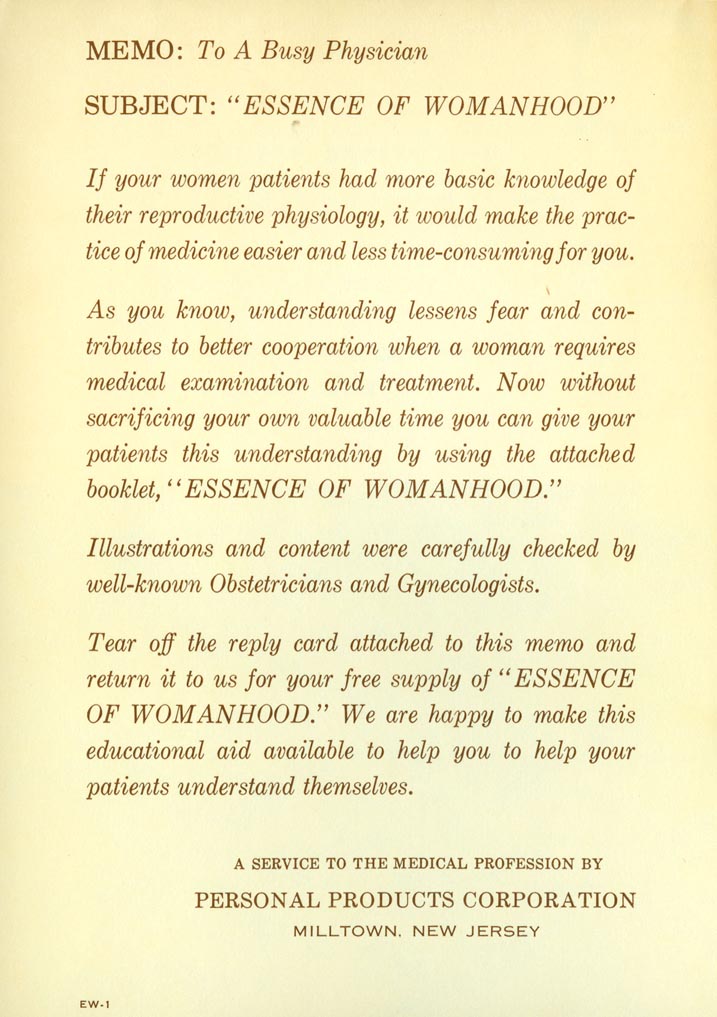The Medical Department of the United States Army in the World War volume 8: Field Operations (1925)
The Medical and Surgical History of the War of the Rebellion. (1861-1865) Part I. Volume I. Medical History. (1st Medical volume) (1870)
Autopsy of President Kennedy (1965) by Pierre Finck, AFIP. From the Blumberg collection.
A Medical Survey of the Bituminous-Coal Industry (1947), Coal Mines Administration, US Department of the Interior. From the Vorwald collection.
An unofficial blog about the National Museum of Health and Medicine (nee the Army Medical Museum) in Silver Spring, MD. Visit for news about the museum, new projects, musing on the history of medicine and neat pictures.
Friday, February 29, 2008
Thursday, February 28, 2008
How pharmaceuticals really are made
I'm sure most of us still hold to the old white-coated scientists in gleaming labs with ingredients never touched by human hands view. So read this fascinating expose.
Twists in Chain of Supplies for Blood Drug
By DAVID BARBOZA and WALT BOGDANICH
New York Times February 28, 2008
Differing statements from the factory owner and traders highlight the difficulty of tracing the supply chain in China for the blood-thinner heparin.
Chinese pig intestines!
Twists in Chain of Supplies for Blood Drug
By DAVID BARBOZA and WALT BOGDANICH
New York Times February 28, 2008
Differing statements from the factory owner and traders highlight the difficulty of tracing the supply chain in China for the blood-thinner heparin.
Chinese pig intestines!
New book donated to museum
3 new scanned books on Internet Archive
Free for downloading, but very large files.
The Medical Department of the United States Army in the World War volume 7: Training (1926) - this has a section on the Army Medical School which spun off of the Army Medical Museum, and in turn spun off the Walter Reed Army Institute of Research, but whose role has been taken up by the Uniformed Services University of the Health Sciences in Bethesda.
A Catalogue of Surgeons' Instruments, Air and Water Beds, Pillows, and Cushions, Bandages, Trusses, Elastic Stockings, Inhalers, Galvanic Apparatus, and Other Appliances Used by the Medical Profession, Maw and Son, 1866
The Medical and Surgical History of the War of the Rebellion. Part III, Volume II. (3rd Surgical volume)
The Medical Department of the United States Army in the World War volume 7: Training (1926) - this has a section on the Army Medical School which spun off of the Army Medical Museum, and in turn spun off the Walter Reed Army Institute of Research, but whose role has been taken up by the Uniformed Services University of the Health Sciences in Bethesda.
A Catalogue of Surgeons' Instruments, Air and Water Beds, Pillows, and Cushions, Bandages, Trusses, Elastic Stockings, Inhalers, Galvanic Apparatus, and Other Appliances Used by the Medical Profession, Maw and Son, 1866
The Medical and Surgical History of the War of the Rebellion. Part III, Volume II. (3rd Surgical volume)
Wednesday, February 27, 2008
Virtual Museums

I am increasingly amazed and fascinated with the growing presence of virtual museums and online exhibits. The internet is creating the perfect platform for these niche topics. I'd like to see the NMHM do an online condom exhibit. Check out the Museum of Food Anomalies. I like the fetus in the fried egg.
Thursday Lecture on African American Surgeons During the Civil War
Dr. Robert Slawson will be speaking on the topic African American Surgeons during the Civil War. The lecture will begin at 11:00 AM on February 28th. The lecture's for the Museum's docents, but Andrea said it's open to the public.
Ephemera - whadya do with it?

So what do you notice when you look at this box? It's a box of crackers? It's low fat? It's pink? It's a big breast cancer awareness advertisement?
The last is what I noticed. This is the type of ephemera which usually doesn't get saved, but is darn useful for doing exhibits. The question about where to file it then arises of course. We dropped this in a folder on Breast Cancer and didn't catalogue it in our General Medical Products Information trade literature collection.
Pathology article in Washington Post talks about value of saved tissue
See
"In a Va. Lab, Forging Links To Speed Cancer Advances GMU, With Ties to Italy, Aims to Be a Biotech Force," By Michael Laris, Washington Post Staff Writer, Wednesday, February 27, 2008; B01.
"In a Va. Lab, Forging Links To Speed Cancer Advances GMU, With Ties to Italy, Aims to Be a Biotech Force," By Michael Laris, Washington Post Staff Writer, Wednesday, February 27, 2008; B01.
New book donated to museum

We just received The Tropical World of Samuel Taylor Darling: Parasites, Pathology and Philanthropy by E. Chaves-Carballo, Sussex Academic Press, 2007.
Dr. Chaves-Carballo used our collection a little bit to write this biography of the pathologist at Panama's Gorgas Hospital. We have Darling's pathological reports and autopsies of the hospital in OHA 177 Gorgas Hospital Autopsies and Pathology Reports, 1900s-1970s. Darling discovered the fungal disease Histoplasmosis (although according to the book he thought it was a protozoa) and a picture from us of a 1905 autopsy report of the first case is on p. 66. The autopsy records also showed how many cases of malaria (called estivo-autumnal fever) was killing people.
6th World War 1 history online
I got the scan of the very large The Medical Department of the United States Army in the World War volume 6: Sanitation (1926) up for downloading at the Internet Archive today.
Washington Post article on Walter Reed
"Trying Some Disney Attitude to Help Cure Walter Reed," By Steve Vogel, Washington Post Staff Writer, Monday, February 25, 2008; B01.
Tuesday, February 26, 2008
When you thought there couldn't be anything better than fabric brains....
Unbelievably, there is also a Gallery of Wood Brain Art. They produce figured wooden brains customized to reflect your research interests or particular features of your own brain, working either from 3D or 4D fMRI scans, jpgs or from psychological or medical diagnoses.
Speaking of Brains....

I am absolutely impressed with a new find in the museum world, The Museum of Fabric Brain Art. Wow. I'm thinking of creating The Museum of Fabric Bezoar Art--I already have one hand-crafted item in my personal collection.
Brain Awareness Week at the NMHM

For the ninth year, the NMHM will host a Brain Awareness Week (BAW) program for middle school students. This year over 800 students from DC, VA and MD will visit the museum between March 10 and 14 to participate in hands-on activities with area neuroscientists to learn more about the brain. Hopes are to inspire the next generation of neuroscientists.
The NMHM also has a new web page about BAW, including our new BAW mascot.
Some medical trade literature with gender issues
I put up on Flickr 4 scans from 3 pieces of medical trade literature responding to a posting on another blog about gender and advertising. Here they are:
 duJur-Amsco's' "Communication Capsules for Inner Space - the new... Stenorette dictating systems" cover. Circa 1961. Accession #2002.0042.
duJur-Amsco's' "Communication Capsules for Inner Space - the new... Stenorette dictating systems" cover. Circa 1961. Accession #2002.0042.
 "Essence of Womanhood" Published by Personal Products Corporation, Milltown, New Jersey. Makers of MODESS TAMPONS. Circa 1960. Accession #2002.0042.
"Essence of Womanhood" Published by Personal Products Corporation, Milltown, New Jersey. Makers of MODESS TAMPONS. Circa 1960. Accession #2002.0042.
 "Essence of Womanhood" doctor's ordering form. Published by Personal Products Corporation, Milltown, New Jersey. Makers of MODESS TAMPONS. Circa 1960. Accession #2002.0042.
"Essence of Womanhood" doctor's ordering form. Published by Personal Products Corporation, Milltown, New Jersey. Makers of MODESS TAMPONS. Circa 1960. Accession #2002.0042.
 "Lady, your anxiety is showing (over a coexisting depression)" folder cover for "The Nervous System anatomical illustrations" published by Merck, Sharp and Dohme, West Point, PA. Circa. 1969. Advertises Triavil "a broad-spectrum psychotheraputic agent for the management of outpatients and hospitalized patients with psychoses or neurosis characterized by mixtures of anxiety or agitation with symptoms of depression..." Accession #2002.0042.
"Lady, your anxiety is showing (over a coexisting depression)" folder cover for "The Nervous System anatomical illustrations" published by Merck, Sharp and Dohme, West Point, PA. Circa. 1969. Advertises Triavil "a broad-spectrum psychotheraputic agent for the management of outpatients and hospitalized patients with psychoses or neurosis characterized by mixtures of anxiety or agitation with symptoms of depression..." Accession #2002.0042.
Trade literature and advertising can be fascinating.
 duJur-Amsco's' "Communication Capsules for Inner Space - the new... Stenorette dictating systems" cover. Circa 1961. Accession #2002.0042.
duJur-Amsco's' "Communication Capsules for Inner Space - the new... Stenorette dictating systems" cover. Circa 1961. Accession #2002.0042. "Essence of Womanhood" Published by Personal Products Corporation, Milltown, New Jersey. Makers of MODESS TAMPONS. Circa 1960. Accession #2002.0042.
"Essence of Womanhood" Published by Personal Products Corporation, Milltown, New Jersey. Makers of MODESS TAMPONS. Circa 1960. Accession #2002.0042. "Essence of Womanhood" doctor's ordering form. Published by Personal Products Corporation, Milltown, New Jersey. Makers of MODESS TAMPONS. Circa 1960. Accession #2002.0042.
"Essence of Womanhood" doctor's ordering form. Published by Personal Products Corporation, Milltown, New Jersey. Makers of MODESS TAMPONS. Circa 1960. Accession #2002.0042. "Lady, your anxiety is showing (over a coexisting depression)" folder cover for "The Nervous System anatomical illustrations" published by Merck, Sharp and Dohme, West Point, PA. Circa. 1969. Advertises Triavil "a broad-spectrum psychotheraputic agent for the management of outpatients and hospitalized patients with psychoses or neurosis characterized by mixtures of anxiety or agitation with symptoms of depression..." Accession #2002.0042.
"Lady, your anxiety is showing (over a coexisting depression)" folder cover for "The Nervous System anatomical illustrations" published by Merck, Sharp and Dohme, West Point, PA. Circa. 1969. Advertises Triavil "a broad-spectrum psychotheraputic agent for the management of outpatients and hospitalized patients with psychoses or neurosis characterized by mixtures of anxiety or agitation with symptoms of depression..." Accession #2002.0042.Trade literature and advertising can be fascinating.
Monday, February 25, 2008
Plastination and repatriation
Global Museum had links to a couple of articles of interest.
The first is on plastination - Gunter von Hagens developed this technique for preserving tissue in the 1980s and currently has exhibits touring the US including one in Baltimore now. The article deals with the question of where the human remains come from before they're plastinated. The Baltimore Sun's blog goes into more details.
The second is on repatriation, or the return of material originating with another culture. This article focuses on New Zealand, but the NMHM has repatriated material in the past, and has had ceremonies in its space.
The first is on plastination - Gunter von Hagens developed this technique for preserving tissue in the 1980s and currently has exhibits touring the US including one in Baltimore now. The article deals with the question of where the human remains come from before they're plastinated. The Baltimore Sun's blog goes into more details.
The second is on repatriation, or the return of material originating with another culture. This article focuses on New Zealand, but the NMHM has repatriated material in the past, and has had ceremonies in its space.
Flickr picture viewing, OR What Boing-Boing meant to us
Last month, without us knowing it, Boing-Boing ran a bit about our Flickr sites (links in sidebar). This is what happened to traffic on the 3 sites we have (after we fill the free 200 pictures, we start a new one). This was all a surprise to us because we can't access BoingBoing either.
1/18/2008: 14,386 views, accounts 1 & 2 combined for the previous year and a half.
1/25/2008:
At about 3:30 pm:
1: 18,435 views
2: 5,442 views
3: about 660
-------------
24,537
At 4 pm:
1: 18,896
2: 5,705 - 3 minutes later - 5731
3: 930
-------------
25,557
4:11 pm:
1: 19,030
2: 5,877
6:00 pm:
1: 20,476
2: 6,731
3: 1,230
7:15 pm:
1: 21,231
2: 7,292
3: 1,379
1/26/2008
11:00 am:
1: 25,101
2: 9,752
3: 2,120
9:00 pm:
1: 26,905
2: 10,844
3: 2,439
1/27/2008
Noon:
1: 28,686
2: 11,803
3: 2,738
1/28/2008
9:30 am:
1: 30,589
2: 12,706
3: 3,045
---------
46,340
2/6/2008: 56,232 combined views
Midday, Bill Koslosky called me and did a brief interview so I had a clue what was going on. We could tell that people were suddenly accessing the sites, but had no idea why.
Amazing, isn't it? They might have gotten our name wrong, but boy did they do some good linking for us. We're still putting pictures up daily, and waiting to hear back from Flickr about joining their Commons project so check out the links on the bar on the right.
1/18/2008: 14,386 views, accounts 1 & 2 combined for the previous year and a half.
1/25/2008:
At about 3:30 pm:
1: 18,435 views
2: 5,442 views
3: about 660
-------------
24,537
At 4 pm:
1: 18,896
2: 5,705 - 3 minutes later - 5731
3: 930
-------------
25,557
4:11 pm:
1: 19,030
2: 5,877
6:00 pm:
1: 20,476
2: 6,731
3: 1,230
7:15 pm:
1: 21,231
2: 7,292
3: 1,379
1/26/2008
11:00 am:
1: 25,101
2: 9,752
3: 2,120
9:00 pm:
1: 26,905
2: 10,844
3: 2,439
1/27/2008
Noon:
1: 28,686
2: 11,803
3: 2,738
1/28/2008
9:30 am:
1: 30,589
2: 12,706
3: 3,045
---------
46,340
2/6/2008: 56,232 combined views
Midday, Bill Koslosky called me and did a brief interview so I had a clue what was going on. We could tell that people were suddenly accessing the sites, but had no idea why.
Amazing, isn't it? They might have gotten our name wrong, but boy did they do some good linking for us. We're still putting pictures up daily, and waiting to hear back from Flickr about joining their Commons project so check out the links on the bar on the right.
Morgellons disease and AFIP
A few week's ago the Washington Post Magazine published an article on Morgellons Disease which was not a condition that I was familiar with. Last week I came across an article stating that the Pathology Institute was asked to look into it - see "CDC enlists military to study skin ailment," Washington Times January 18, 2008.
Online artifact catalogues
We're attempting to build one right now with KE Emu software. This article gives an idea of what we're striving towards - "British Museum takes collection online; Ancient history meets cutting edge technology" by Ian Williams, vnunet.com, 14 Feb 2008
Obviously the British Museum is far larger - the article notes, "Around 275,000 of the museum's more than seven million treasures spanning two million years of history have already been uploaded to the new site, and the remaining items will follow over the coming months." I do think though that we'll get plenty of interest in our collections when we are able to make this work.
Obviously the British Museum is far larger - the article notes, "Around 275,000 of the museum's more than seven million treasures spanning two million years of history have already been uploaded to the new site, and the remaining items will follow over the coming months." I do think though that we'll get plenty of interest in our collections when we are able to make this work.
Museum 'alumni' - Marc Micozzi
Sometimes we're asked what former staff members are doing. Dr. Marc Micozzi became the Museum's director in 1986, and left in the early 1990s for the College of Physicians of Philadelphia. An internet news search on the Museum brought up this press release from last year - "Marc Micozzi Appointed to Prestigious Advisory Board of UC Irvine Extension's 'Spa & Hospitality Management'' Certificate Program."
Subscribe to:
Posts (Atom)
